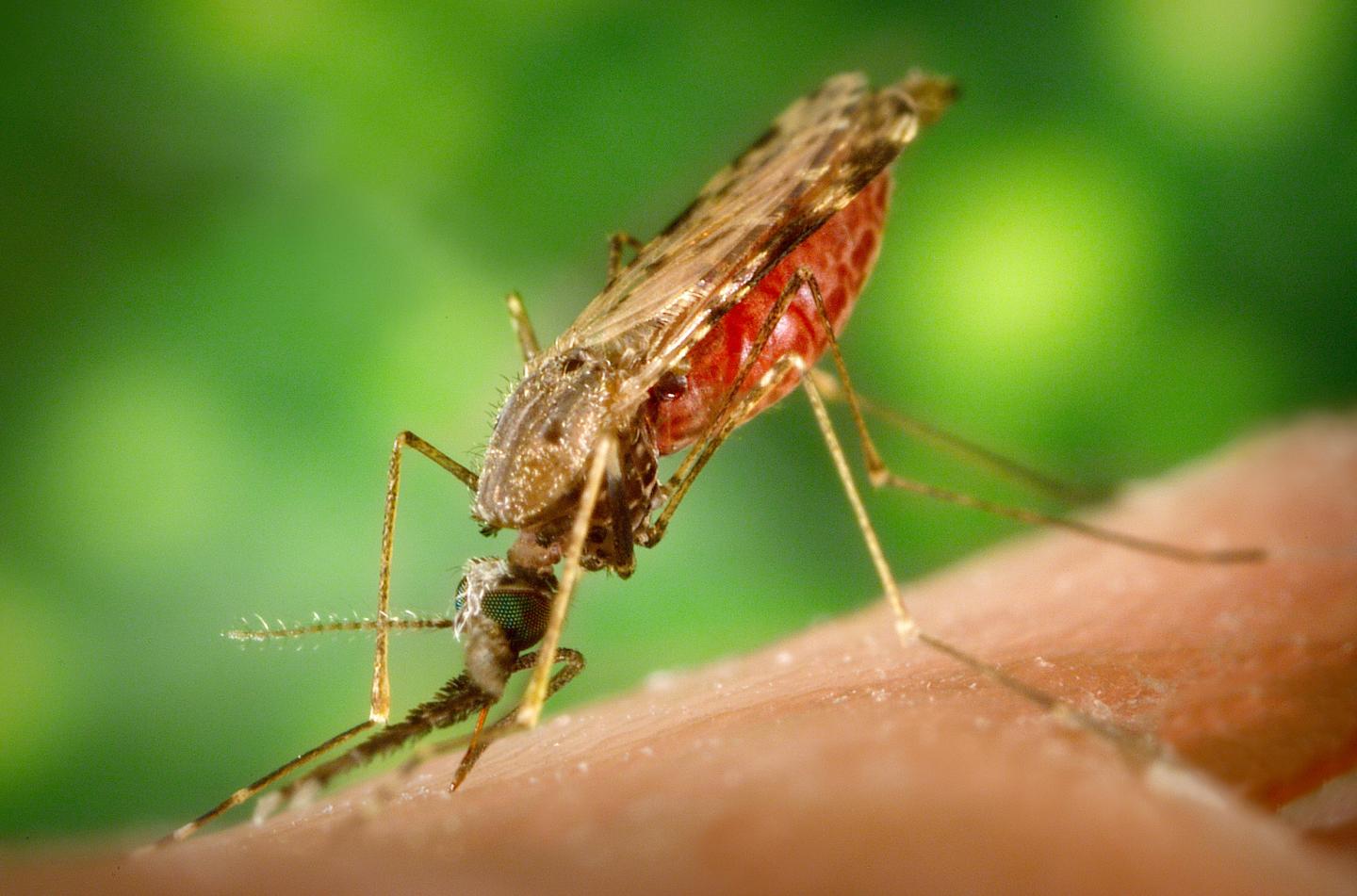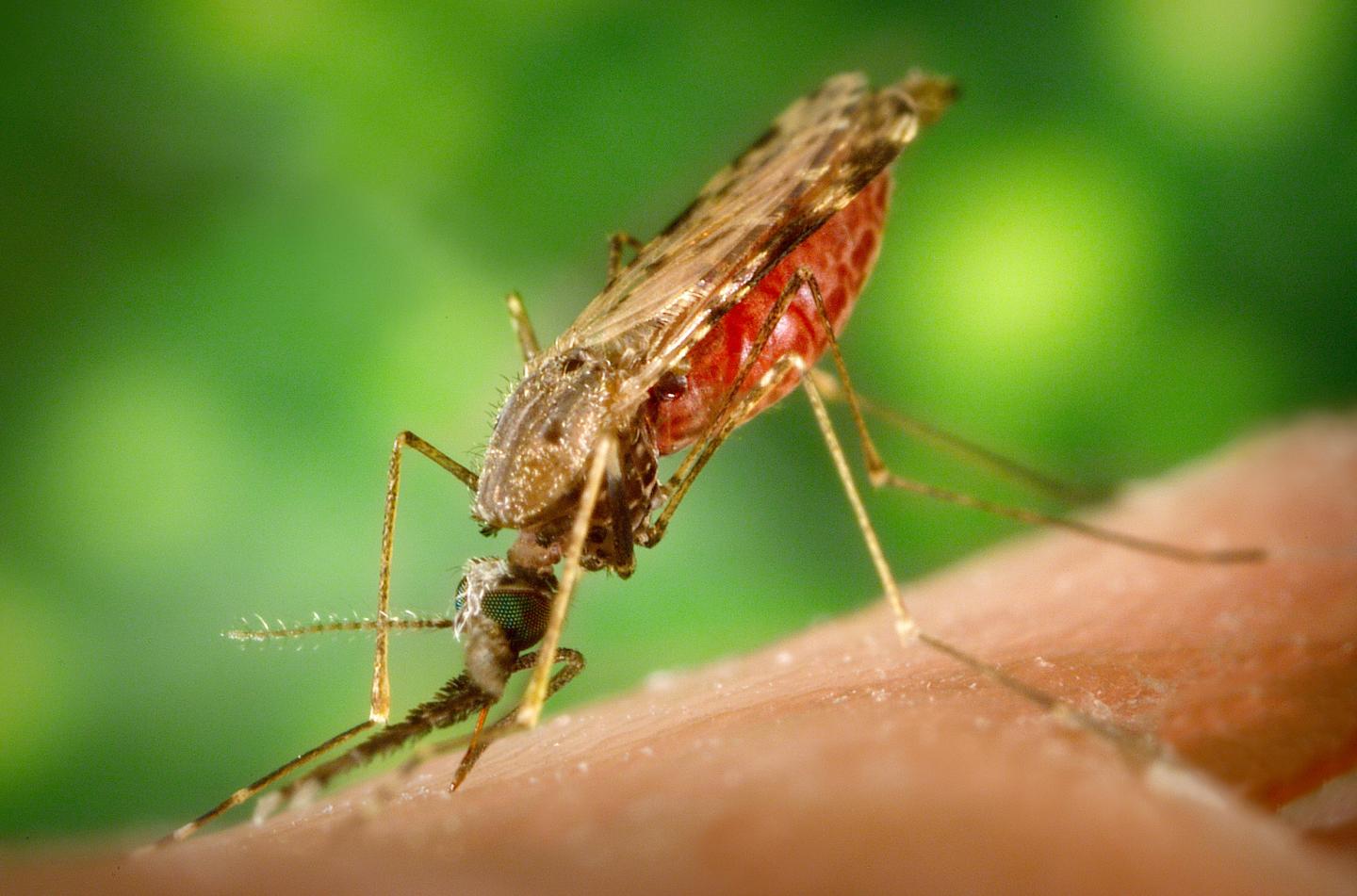
Credit: Centers for Disease Control and Prevention
The parasite that causes malaria has not one, but two, specialized proteins that protect its messenger RNAs — genetic material that encodes for proteins — until the parasite takes up residence in a new mosquito or a human host. A new study by researchers at Penn State describes the two proteins and reveals an additional role that one may play to facilitate RNA-based interactions between the parasite, its mosquito vector, and its human host. The study appears January 10, 2018, in the journal mSphere.
"Understanding the malaria parasite and how it interacts with its host may provide insights that could help prevent the spread of this often-fatal disease," said Scott Lindner, assistant professor of biochemistry and molecular biology at Penn State and senior author of the study. "The malaria parasite has a complex life cycle that includes phases in the mosquito vector, the human liver, and in human blood. Moreover, the parasite has no idea when it's going to be transmitted from a mosquito to a human host and back, so it always needs to be ready to be transmitted. It prepares for this by making and packaging up the mRNAs that it will eventually need for making proteins inside its new host or a new mosquito."
During this process, called translational repression, special proteins bind to mRNAs and prevent them from being translated into protein. One protein involved binds to the mRNA's poly(A) tail — a repeated string of As or adenosine molecules added to the end of most mRNA strands. This helps to form a complex of proteins and RNA that is silenced but poised for action after the parasite is transmitted to the host. Most single-celled organisms have one type of this poly(A)-binding protein, while multi-cellular organisms have two. In this study, the researchers characterize two types of poly(A)-binding proteins in the single-celled Plasmodium parasite, both of which contribute to translational regulation.
"We knew from our lab's previous work that Plasmodium had a type of poly(A)-binding protein that functions outside of the nucleus of the cell," said Allen Minns, research technician at Penn State and first author of the paper. "This protein binds and protects the poly(A) tail at one end of an mRNA strand. In this study, we used biochemical approaches to further characterize this protein, and found that it also has a specialized job receiving mRNAs. It forms chains without the presence of RNA, which potentially allows large assemblies of the protein to quickly protect the entire length of the poly(A) tail."
The researchers also identified and characterized a second type of poly(A)-binding protein that functions inside the nucleus of the parasite during the blood stages of its life cycle. In multi-cellular organisms, this second poly(A)-binding protein usually performs a quality control check before mRNA exits the nucleus, confirming that the mRNA is constructed properly. These quality control proteins then pass on the mRNA strand to other proteins outside of the nucleus, which direct the mRNA to be translated or to be packaged for later use through translational repression.
In addition to an important role in translational regulation inside of the cell, the researchers also discovered that the non-nuclear poly(A)-binding protein may play a surprising role outside of the cell.
"When the parasite takes the form of a sporozoite in the mosquito, we actually don't see the vast majority of the non-nuclear poly(A)-binding protein inside the cell where we expected it to be — where it would interact with mRNAs produced by the parasite," said Lindner. "Instead, the protein accumulates at the surface of the sporozoite and is shed when the parasite moves. We don't see this happening in other life stages of the parasite, and this is now the third RNA-binding protein found to be on the surface of the sporozoite. The parasite is putting these RNA-binding proteins out there on its surface for a reason; the new and exciting question is why."
The researchers speculate that the poly(A)-binding proteins on the sporozoite surface allow the parasite to interact with RNA from sources outside of the parasite and could thus provide an opportunity for the parasite to interact with the mosquito or the host through their RNA.
"This study suggests that the parasite's interaction with outside RNA is probably much more pervasive than we thought it was," said Lindner. "It is possible that this kind of interaction could eventually provide a new target for intervention strategies, but the first step is understanding why the malaria parasite has these poly(A)-binding proteins on the sporozoite surface."
###
In addition to Lindner and Minns, the research team includes Penn State graduate students Kevin Hart and Suriyasri Subramanian, and Susan Hafenstein, associate professor of biochemistry and molecular biology at Penn State and associate professor of at Penn State University Park, and associate professor medicine and of microbiology and immunology at the Penn State College of Medicine. This work was funded by the National Institutes of Health and supported by the Huck Institutes of the Life Sciences.
Media Contact
Barbara Kennedy
[email protected]
814-863-4682
@penn_state
http://live.psu.edu
Original Source
http://science.psu.edu/news-and-events/2018-news/Lindner1-2018 http://dx.doi.org/10.1128/mSphere.00435-17





